Anyone have solutions to watering plants in a house with soft water?
Andrea
3 years ago
Featured Answer
Sort by:Oldest
Comments (51)
Andrea
3 years agofloral_uk z.8/9 SW UK
3 years agoRelated Discussions
House plant excess water drainage
Comments (11)Thanks for the help dellis326, I have very little experience with all these piping/tubing terms. It seems difficult to find many of the items in smaller dimensions so as to fit the smaller sized saucers. Also, at those smaller dimensions the draining capacity will be severely reduced, as well as the buffering volume of the saucer (requiring more controlled release of the water, in order to avoid overflow). I'm thinking to perhaps connect the drainage directly to the pots instead, and seal the drainage holes. The pot will then serve as a bigger buffer, and also allows for larger fittings to be used (since the saucers have a limited height). The issue then becomes to seal the drainage holes well (which should be fairly simple), and to find some kind of filter to attach to the bulkhead fitting (so that no soil particles run down the drain). Well, and the repotting necessary to install everything... Seems like there is no easy way out :)...See MoreWatering with soft water
Comments (4)Soft water will eventually destroy your garden, it happened to my father in laws garden after 4 to 5 years of watering with it. His tomato plants would die before they even got to set fruit, all kinds of pests and blights plagued everything. He got his soil tested and the said TOO HIGH SALT, too low magnesium and calcium. Which that is what a softener does, takes out good and puts in bad. He had heart attack years later too, another minor side effect of prolonged soft water abuse...See MoreAnyone using a No Salt Water Softener for your new home?
Comments (3)We had a 'no salt' water softerner that is, as described, an electrical unit. I measured the rust content before and after installation, and it most definitely reduce iron levels. We've since switched over to a NO Salt water softener; they are much larger and significantly more expensive, but work much better....See MoreSoft Water/Warter Softener Questions
Comments (25)bill, Always best to start a new thread for a new question rather than resurrect a two year old thread. I've seen people use a "mixing valve" or modify a three ball bypass to feed hard water (from before the softener) into the soft water (after the softener) to temper the soft water. They end getting slightly hard (1-3g hardness) if they do it right and harder water if they do it wrong. Doing that might satisfy their objection to that "slimy feeling" but at the cost of retreating back to hardness in their water. IMO, if you have hard water then you want soft water... for all it's benefits. People I know who were initially 100% against the slimy feeling of soft water acclimated after a month or so and never gave it another thought. They especially liked the way their laundry and hair felt after washing with soft water. No one seemed to mind using far less detergent and soap or not having to repair faucet leaks and replace water heaters as often. It takes a while to get used to anything new. A vacation to a motel or visiting family that has soft water is a short term exposure and often a very apparent change from what you're used to. click here for info on "slimy" feeling soft water Another consideration, if hardness in the water is considerable then the amount of sodium or potassium ions exchanged are greater so a "taste" becomes more apparent. 5g hardness water will taste different from 30g hardness water simply due to the additional ions being exchanged in the softening process... all other things being equal. An under (kitchen) sink POU Reverse Osmosis unit works wonders providing pure water for drinking, cooking, and the ice maker or water spout in the fridge. Regardless, there is no "salt" of any kind added to soft water. Adding "salt" would be adding NaCl or KCl and that is not done. The Na or K ions are exchanged but the Cl (chloride) ions are flushed down the drain during regeneration. Softened water can and will taste different than hard water to a discriminating palette (my wife can nail it every time) but if the softened water does indeed taste "salty" and not simply different then the softener is not operating correctly and should be checked....See MoreAndrea
3 years agokeys6505
3 years agoStax
3 years agoStax
3 years agoSeabornman
3 years agodamask_rose_zone9b
3 years agofloral_uk z.8/9 SW UK
3 years agolast modified: 3 years agoAndrea
3 years agoAndrea
3 years agoAndrea
3 years agoAndrea
3 years agoStax
3 years agolast modified: 3 years agogreg_2015
3 years agoJake The Wonderdog
3 years agoStax
3 years agolast modified: 3 years agoAndrea
3 years agosuedonim75
3 years agolast modified: 3 years agoAndrea
3 years agoAndrea
3 years agoAndrea
3 years agotapla (mid-Michigan, USDA z5b-6a)
3 years agolast modified: 3 years agoAndrea thanked tapla (mid-Michigan, USDA z5b-6a)Stax
3 years agoEnlightened Gardener
2 years agolast modified: 2 years agogreymare
last yeartapla (mid-Michigan, USDA z5b-6a)
last yeargreymare
last yeariochroma
last yearHU-28956773685
last monthBillMN-z-2-3-4
last monthShadyWillowFarm
last monthElena Zzzz
28 days agolast modified: 24 days agoShadyWillowFarm
28 days agoJake The Wonderdog
27 days agolast modified: 27 days agotapla (mid-Michigan, USDA z5b-6a)
27 days agoSeabornman
27 days agotapla (mid-Michigan, USDA z5b-6a)
27 days agolast modified: 27 days agoShadyWillowFarm
26 days agoJake The Wonderdog
26 days agolast modified: 26 days agoShadyWillowFarm
26 days agodchall_san_antonio
24 days agoShadyWillowFarm
23 days agoSeabornman
23 days agojohn davis
23 days agotapla (mid-Michigan, USDA z5b-6a)
23 days agoShadyWillowFarm
23 days ago
Related Stories

CONTAINER GARDENSContainer Garden Basics: How and When to Water Potted Plants
Confused about soil moisture, the best time to water and what watering device to use? This guide can help
Full Story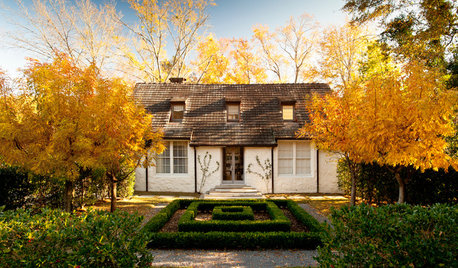
GARDENING GUIDES6 Plants for Colorful Fall Foliage in the Water-Wise Western Garden
Try these colorful, drought-tolerant additions to your garden for a fall season filled with color
Full Story
GARDENING GUIDES8 Unthirsty Plants Help You Save Water in Style
Spend less effort and money on your landscape with drought-tolerant and native plants that liven up your yard
Full Story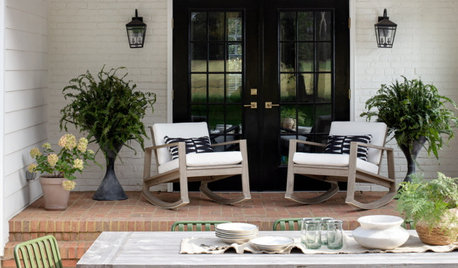
SUMMER GARDENINGHow to Water and Refresh Your Potted Plants Over the Summer
Keep container gardens looking lush by cooling them down when temperatures rise and by giving them a seasonal spruce-up
Full Story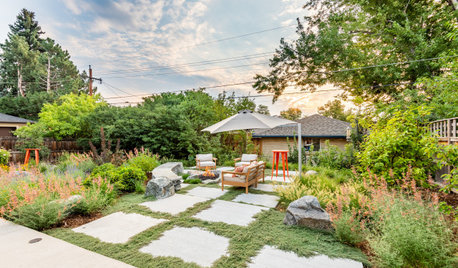
LANDSCAPE DESIGNYard of the Week: Native and Low-Water Plants in Colorado
A bleak backyard is transformed into a colorful meadow-like space with a fire pit, a dining patio and an edible garden
Full Story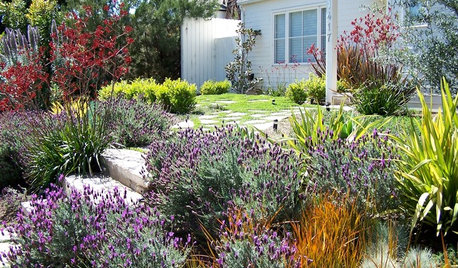
SAVING WATERGreat Plants for Lush, Low-Water Gardens
Water restrictions making your garden look washed out? Give it living color with unthirsty grasses, flowers and succulents
Full Story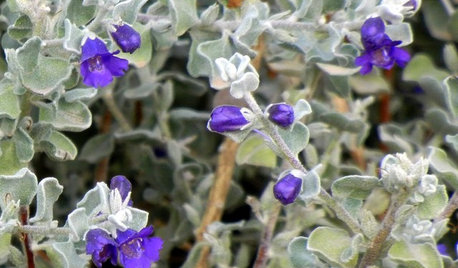
GARDENING GUIDESGreat Design Plant: Violet Silverleaf Thrives on Scant Water
Purple flowers transform silvery, sun-loving Leucophyllum candidum, while its easy care may change your gardening routine
Full Story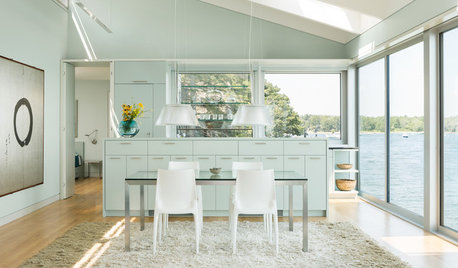
HOUZZ TOURSHouzz Tour: Battling the Tides Results in a Wondrous House on the Water
A complex construction effort pays off big-time with unobstructed views of Blue Hill Bay in Maine
Full Story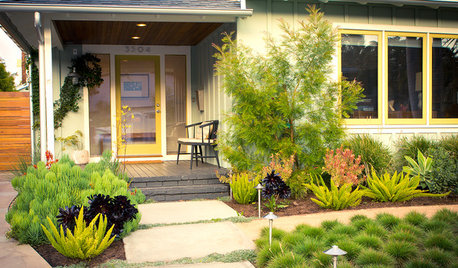
INSPIRING GARDENSBeach Cottage Loses the Lawn for a Stylish Low-Water Garden
Colorful plantings and soft exterior paint colors give a Southern California ranch cottage a fresh new look
Full Story
HEALTHY HOMEHow to Choose a Home Water Filtering System
Learn which water purification method is best for your house, from pitchers to whole-house setups
Full Story



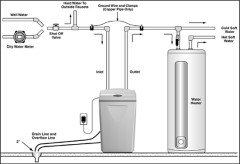




tapla (mid-Michigan, USDA z5b-6a)